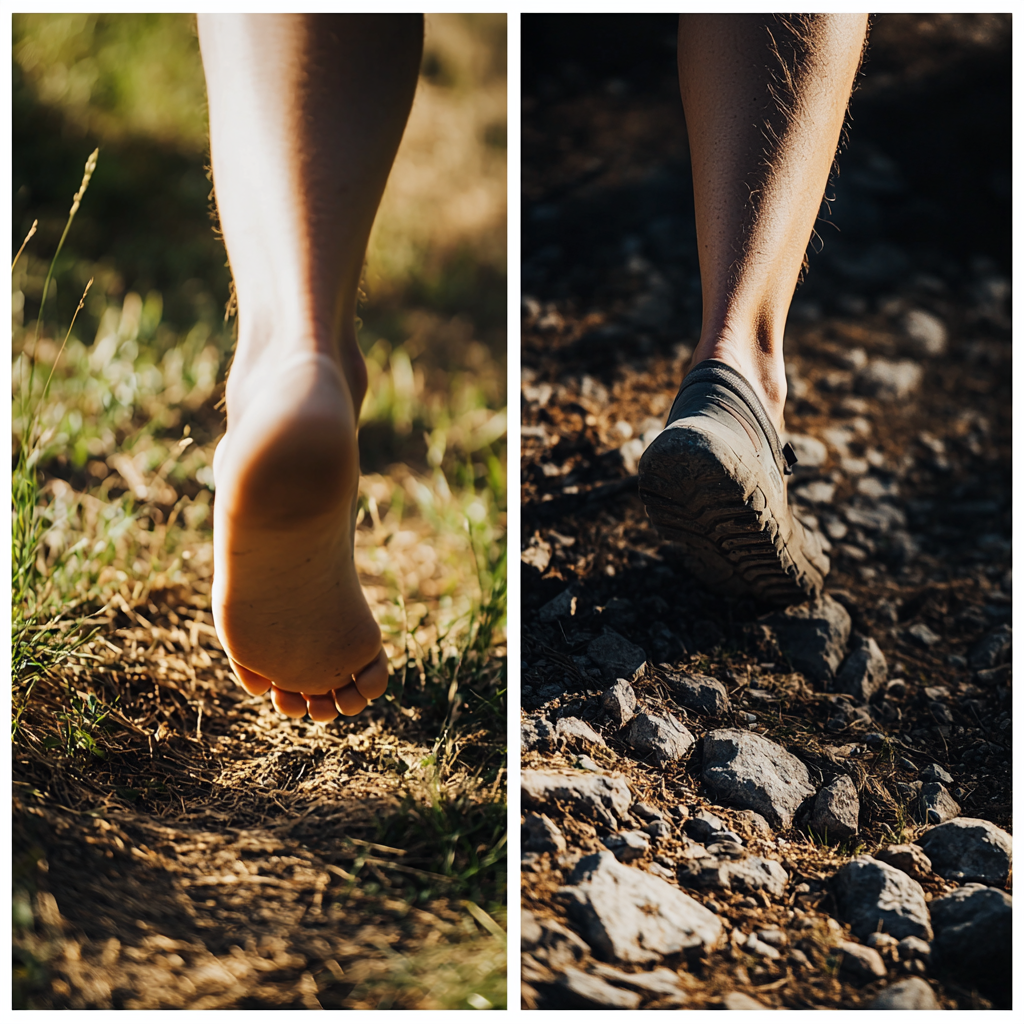For most people, shoes are an essential part of their daily attire. However, there’s a growing movement of individuals embracing the barefoot lifestyle. While some tout the benefits of going au naturel with our feet, others warn of potential risks. Let’s dive into the weird and wonderful world of what happens when you kick off your kicks for good.
1. Your Soles Become Superhuman
One of the most noticeable changes when you stop wearing shoes is the transformation of your soles. Without the constant protection of footwear, the skin on the bottom of your feet begins to thicken and toughen up. This natural adaptation process creates a built-in shoe of sorts, allowing you to traverse rough surfaces with ease. Long-term barefoot enthusiasts report developing soles that can resist even the most challenging terrains.
However, this superhuman sole comes with a catch. While your feet may become more resilient to rough surfaces, they’re still vulnerable to sharp objects and extreme temperatures. It’s not uncommon for barefoot walkers to experience cuts, burns, or other injuries that shoes would typically prevent.
2. Your Foot Muscles Get a Serious Workout

When you ditch your shoes, your feet are forced to work harder. Walking barefoot can strengthen the muscles in your feet and legs, improving your overall foot mechanics and ankle range of motion. This increased muscle engagement doesn’t stop at your feet – it can lead to improvements in your balance and posture as well.
But be warned: this sudden increase in foot muscle activity can lead to some initial discomfort. Many people report experiencing sore feet and calves when they first start going barefoot regularly. It’s like your feet are hitting the gym for the first time in years!
3. Your Risk of Certain Infections Skyrockets
While going barefoot might feel liberating, it also exposes your feet to a whole new world of microscopic threats. Fungal infections like athlete’s foot and nail fungus become much more likely when you’re constantly barefoot, especially in public spaces. These unwelcome guests can be stubborn to get rid of and may require multiple treatments.
But it’s not just fungi you need to worry about. Plantar warts, caused by the human papillomavirus (HPV), can easily find their way onto your bare soles. These pesky growths can be painful and challenging to treat, often requiring multiple doctor visits. So while you might be saving money on shoes, you could end up spending it on podiatrist appointments instead!
4. Your Gait Gets a Major Makeover

One of the most significant changes that occurs when you stop wearing shoes is a shift in your walking pattern. Without the cushioning and support of shoes, your feet naturally adopt a different gait. Many barefoot enthusiasts report that they start landing more on the midfoot or forefoot, rather than striking with the heel as is common in shoe-wearing populations.
This change in gait can have ripple effects throughout your body. Some people experience relief from knee and back pain as their body adjusts to a more natural walking pattern. However, others may find that the sudden change leads to new aches and pains as their muscles and joints adapt to this unfamiliar way of moving.
5. Your Sensory Perception Goes into Overdrive
Imagine suddenly gaining a superpower – that’s what it can feel like when you start going barefoot regularly. Your feet are packed with nerve endings, and when you remove the barrier of shoes, these sensory receptors go into overdrive. You’ll start noticing textures, temperatures, and terrain variations that you never paid attention to before.
This heightened sensory awareness can be both a blessing and a curse. On one hand, it can lead to a greater sense of connection with your environment and improved proprioception (your body’s ability to sense its position in space). On the other hand, you might find yourself wincing at every little pebble or twig that you step on. It’s like your feet develop a personality of their own – sometimes delighted, sometimes indignant at the world beneath them!
6. Your Social Life Takes an Unexpected Turn

Perhaps one of the weirdest things that happens when you stop wearing shoes is the impact on your social interactions. Going barefoot in public spaces can draw a lot of attention – some of it positive, much of it negative. Barefoot advocates often face criticism and skepticism from the public, with reactions ranging from curiosity to outright horror.
You might find yourself explaining your choices more often than you’d like, or even being turned away from certain establishments. “No shoes, no service” signs suddenly become your nemesis. On the flip side, you might connect with a whole new community of like-minded barefoot enthusiasts. It’s not uncommon for barefoot walkers to form tight-knit groups, bonding over their shared love of free feet.
While the barefoot lifestyle can offer some intriguing benefits, it’s important to approach it with caution. The risks of injury and infection, especially in public spaces, are real and shouldn’t be ignored. If you’re intrigued by the idea of going barefoot but aren’t ready to fully commit, consider starting with minimalist shoes or limiting your barefoot time to safe, natural surfaces.
Remember, your feet have been relying on shoes for support and protection for most of your life. Transitioning to a barefoot lifestyle should be done gradually, allowing your feet time to adapt and strengthen. And if you have any pre-existing foot conditions or health concerns, it’s crucial to consult with a healthcare professional before kicking off your shoes for good.
In the end, whether you choose to embrace the barefoot life or stick with your favorite sneakers, the most important thing is to keep your feet healthy and happy. After all, they carry you through life – shoe or no shoe!

